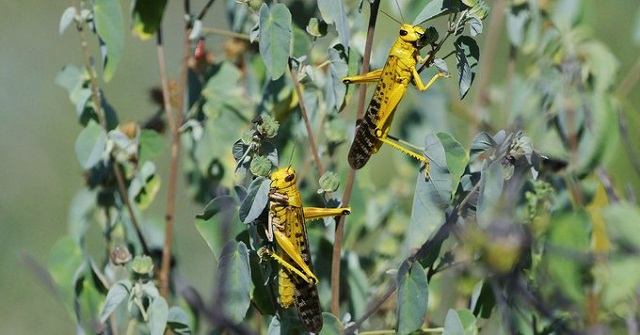
Kampala, Uganda | THE INDEPENDENT | Karamoja would have suffered unprecedented crop losses if the desert locust’s invasion happened during the rainy season when the gardens were flourishing, officials have said.
According to the UN Food and Agriculture Organisation-FAO, desert locusts are potentially the most dangerous of the locust pests because of the ability of swarms to fly rapidly across great distances. They feed on nearly all crops, and non-crop plants like pearl millet, maize, sorghum, barley, rice, sugarcane, cotton, date palms, banana plants, vegetables and weeds.
But the Karamoja region is now dry, with not so much green vegetation, a development which, according to residents was a blessing in disguise because, in the end, there was not so much for the locusts to feed on.
FAO research shows that desert locusts increase rapidly when there is plentiful rain and green vegetation. It further indicates that the majority of desert locust upsurges and plagues develop as a result of unusual meteorological conditions such as those associated with cyclones and other extreme weather events that lead to heavy rainfall, which, in turn, causes ecological conditions to become extremely favourable for locust breeding.
Zakaria Ocwe, 77, of Rupa sub-country says the impact of the desert locust’s invasion to the sub-region would have culminated into famine as the insects are notorious for massive crop destruction. Ocwe recalls that during the locust invasion in the 1960’s, the insects reduced crop garden to bare fields just within hours.
“Desert Locusts invaded in the 60’s. Since then it has never attacked again. It’s bad, the swarms eat up the whole farm, where they land,” he said, recalling how people used smoke and drums to scare locusts away. “They are too dangerous, once they attack, famine strikes in,” Ocwe added.
Mariko Longoli of Nadunget Sub County in Moroto district feels the damage in terms of crop losses will be minimal because nearly all the farmers have already finished harvesting their crops.
“Our appeal is that the government should curb an invasion of the desert locusts before the planting season begins to avoid loses. When they fall in the garden, its gone,” Longoli said in an interview with URN.
Whereas the farmers in Moroto have picked all their harvest from the gardens, some from Kotido have not completed harvesting sorghum. Kotido Agriculture Officer Bernard Obin says that often, farmers in Kotido harvest much later while threshing it in the fields.
Amudat District Chief Administrative Officer Wasswa Masokoyi says that the damage left by the locusts was minimal because they were constantly on the move. However, he hastens to add that they are monitoring the situation.
Our reporter observed minimal destruction on vegetation in Nakabaat where swarms were on Monday
Currently, the Agriculture and Production Officers from Karamoja and eastern Uganda are receiving a training on how to control the desert locusts, three days since the locusts invaded Karamoja through Amudat and Moroto districts. The 3-day training was organized by the Ministry of Agriculture Animal Industry and Fisheries.
*****
URN
 The Independent Uganda: You get the Truth we Pay the Price
The Independent Uganda: You get the Truth we Pay the Price



